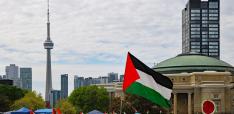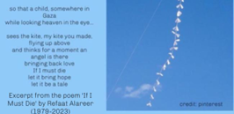Book Review: The Metamorphosis of War, edited by Avery Plaw
The Metamorphosis of War, edited by Avery Plaw. Amsterdam / New York: Editions Rodopi (At the Interface / Probing the Boundaries Series), 2012. 257 pp, €60 paperback, 978 90 420 3571 3
The transformation of war and the changing practices, purposes and languages of warfare are the subject of this excellent volume that also deals with selected responses to armed conflict. The editor, Avery Plaw, is an Associate Professor of Political Science at the University of Massachusetts at Dartmouth, and author of Targeting Terrorists: A License to Kill? (2008) – a thorough analysis of the political history and ethics of targeted killing, its use in the ‘war on terror’, and more generally legitimate/illegitimate forms of counter-terrorism.
These issues are strongly connected with the content of this volume, which aims to illuminate how war has transformed; what are the stakes, mechanisms and consequences of contemporary war; and what resources do we have to break cycles of violence. It does so by mobilizing the knowledge of scholars from a range of disciplines and military practitioners.
There is little doubt that war has evolved and continues to do so. Contemporary wars (whether we call them ‘new wars’ or not) have four distinctive features: they are internal rather than between states; new motivations and goals are at stake (be they cultural, religious or economic); civilians pay the biggest death toll; and full victory is seldom achieved through force alone, but through a combination of force and public support. It may be ironical, as the editor remarks in the introduction, that many analyses of current wars consider them to be atypical in a historical context.
Building upon the canonical description of war by Clausewitz, a number of explanations leave aside the fact that he studied the transformations of war and warned against immutable categories, and they take as the ‘normal’ war Clausewitz’s ‘insightful examination of the form of war dominant at the beginning of the nineteenth century’ (p.8). As Jason Edwards points out, Clausewitz’s work is often taken as ‘outlining a general philosophy of war’ (p. 33) rather than describing war in a particular context and to a particular end.
This confusion raises obstacles when it comes to understanding current armed conflict as a phenomenon that involves a whole range of actors and tensions below and across the level of the state. But this feature is central to the forms in which conflict is organized and conducted. The recent events taking place in Syria and Iraq, with the Islamic State of Iraq and al-Sham (ISIS) taking control of the Iraqi city of Fallujah, and fighting in both countries, may well serve as examples of this reality.
The Metamorphosis of War is divided into four sections. The first, ‘New Concepts of War and Terror’, focuses on the concept of war itself and how it is changing. The second section, ‘Confronting the New Wars: Law, Security and Diplomacy’, deals with changing means of pursuing security in the context of new wars. The third, ‘New Wars, History and Cultural Change’, examines changing representations and experiences of war, and the final section, ‘Waging the New Wars’, examines the strategies used and challenges posed by new forms of warfare.
The chapter by Nick Mansfield makes a provocative case about the relationship of war with democracy and human rights. Building on historical and philosophical theories of war from Hobbes to Kant, Clausewitz, Freud and Derrida, among others, and taking both progress and atrocity as defining points of our era, the common moralistic approaches to war and peace as strict dichotomies are challenged. In real life, he contends, both phenomena are far more entangled and ambiguous, and there is a need to move beyond narratives that are only rhetorically satisfactory (but add nothing in real meaning). Democracy and human rights appear not as stable frameworks, but as aspirations that often need force and violence to become real. Far from being an abstract discussion, this issue connects with contemporary events, particularly the ‘war on terror’ and its deviations: when democracy becomes obligatory, it can lead ‘to rationalisation of atrocity, routinization of collateral damage, bureaucratization of terror and legitimization of torture’ (p.18).
A deep analysis is devoted to some types of actors involved in contemporary armed conflict and the tactics they use. Let us take terrorism, for the pre-eminence of this (ill defined) phenomenon and the influence it has been given on current affairs. Bob Brecher adopts a critical view about terrorism and contends that there is no such thing as political terrorism in the sense in which it has been described: referring to an enemy that spreads terror as an end in itself. There is terror, of course, in a number of theatres of operations. But terror is a tactic used by diverse groups, individuals and states as a means to an (usually political) end. Terror also plays well in the hands of democratic states that use it to discipline their own citizens: to characterize ‘others’ as irrational, and to hide uncomfortable policies and realities from public view.
Terrorism as a tactic is further analysed, taking the IRA as a multi-generational movement able to survive both defeats and partial successes. By placing IRA strategies and their evolution in the framework of Clausewitz and Sun Tzu readings, Timothy D. Hoyt builds an exemplary case to illuminate what abilities make non-state actors able to win irregular struggles. The lessons of the IRA, he suggests, could be applied to Al Qaeda to prevent it from becoming another multi-generational movement and reduce its influence: take advantage of their atrocities; limit our own errors; and use diplomacy and law enforcement instead of military strikes.
Two chapters of this book are particularly provocative in challenging responses to armed conflict. The first presents a critique of the contemporary concept of human security as a well-intentioned attempt that has lost meaning and protective force as the concept expands to include (almost) everything. Proposing the return to a core concept based on the physical inviolability of individuals, Benjamin Rampp forcefully argues for desecuritization and for the establishment of rules and limits for the idea of security. This is presented as the only way to prevent an omnipresent state of emergency.
The authors of the chapter ‘Tiger, Tiger Burning Bright’ use the case of the LTTE in Sri Lanka to argue that the Treaty of Ottawa on anti-personnel landmines, and similar instruments based in a Western value-system, may have little if any impact in today’s low-intensity conflicts. Human security-led campaigns, which call for the abolishment of weapons systems mostly used by non-state actors, should instead seek to tackle the systemic issues at stake: state failure, ethnic or religious differences, and nationalist movements. These far reaching matters cannot be solved or affected by well-intentioned attempts to limit the range of weaponry with which war is waged. Whether you agree or not with their evaluation of the effectiveness of international arms control instruments, there is a strong argument for also considering their limits.
The Metamorphosis of War goes far beyond common accounts of warfare and political violence and provides an historical and philosophical background that illuminates an array of the most pressing issues in modern armed conflict and the mechanisms used to deal with them. It is recommendable for a range of audiences, from military strategists, policy makers and practitioners to all who are interested in the dynamics, means and goals of contemporary war. Profound and provocative while deeply rooted in history and contemporary affairs, this book is of utmost relevance for all those seeking to gain knowledge and/or to advance action with regard to violence in our times.
Mabel Gonzalez Bustelo is a journalist, researcher and international consultant specializing in international peace and security, with a focus on non-State actors in world politics, organized violence, conflict and peacebuilding.


